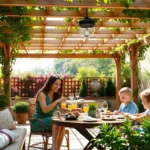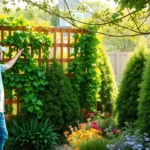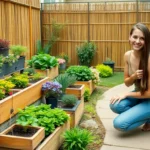We’ve all experienced that uncomfortable feeling when neighbors peer over the fence while we’re trying to enjoy our outdoor sanctuary. Your garden should be your private retreat – a place where you can relax, entertain, and unwind without feeling like you’re on display.
Creating privacy in your garden doesn’t mean building fortress-like walls that block out natural light and fresh air. Instead, we’ll explore clever answers that blend functionality with beauty, from living screens made of lush plants to creative structural elements that define your space while maintaining its charm.
Whether you’re dealing with nosy neighbors, busy streets, or simply want to create intimate outdoor rooms, we’ve gathered practical ideas that’ll transform your exposed yard into a secluded paradise. These privacy answers work for gardens of all sizes and budgets, proving that everyone deserves their own private slice of nature.
Create Natural Barriers With Strategic Plant Placement
Strategic plant placement transforms your garden into a private sanctuary without sacrificing natural beauty. We’ll explore how thoughtfully positioned greenery creates effective privacy screens while improving your outdoor space’s aesthetic appeal.
Choose Fast-Growing Evergreen Trees
Leyland Cypress grows up to 4 feet annually and reaches heights of 60-70 feet, making it our top choice for rapid privacy screening. Plant these trees 6-8 feet apart to create a dense barrier within 3-5 years.
Thuja Green Giant offers exceptional privacy with growth rates of 3-5 feet per year and mature heights of 40-60 feet. Space these evergreens 5-6 feet apart for optimal coverage and air circulation.
Eastern Red Cedar provides year-round screening while tolerating various soil conditions and drought. These native trees grow 12-24 inches annually and create effective windbreaks alongside privacy barriers.
Emerald Green Arborvitae maintains compact growth patterns while delivering consistent privacy screening. Plant these columnar evergreens 3-4 feet apart for formal hedge appearances or space them wider for natural groupings.
Install Dense Shrub Borders
Boxwood varieties create classic privacy borders with dense foliage that responds well to pruning and shaping. Plant American Boxwood 3-4 feet apart for traditional hedge lines or use dwarf varieties for lower screening.
Privet shrubs establish privacy quickly with growth rates of 2-3 feet per year and tolerance for frequent trimming. Space these adaptable plants 2-3 feet apart to form thick barriers that block unwanted views.
Burning Bush delivers seasonal interest with vibrant fall colors while maintaining dense branching patterns. Install these deciduous shrubs 4-5 feet apart for substantial privacy screening that changes with the seasons.
Holly species provide year-round privacy with spiky leaves that deter unwanted visitors naturally. Choose between American Holly for larger spaces or compact varieties like Inkberry for smaller garden areas.
Design Layered Hedge Combinations
Front layer plantings using 2-3 foot shrubs like Spirea or Weigela create visual depth while screening lower sight lines. Position these colorful bloomers 18-24 inches from your property line for seasonal interest.
Middle tier specimens including 4-6 foot plants like Forsythia or Lilac add height variation and flowering elements. Space these medium shrubs 3-4 feet apart to fill gaps between ground level and tree canopy coverage.
Background evergreens such as Pine or Spruce complete the layered approach with year-round screening at 8-15 foot heights. Plant these larger specimens 6-10 feet apart to anchor your privacy design.
Understory additions like Hosta or Ferns soften hard edges while filling remaining gaps in your privacy barrier. These shade-tolerant plants thrive beneath taller specimens and create finished industry appearances.
Build Functional Privacy Structures
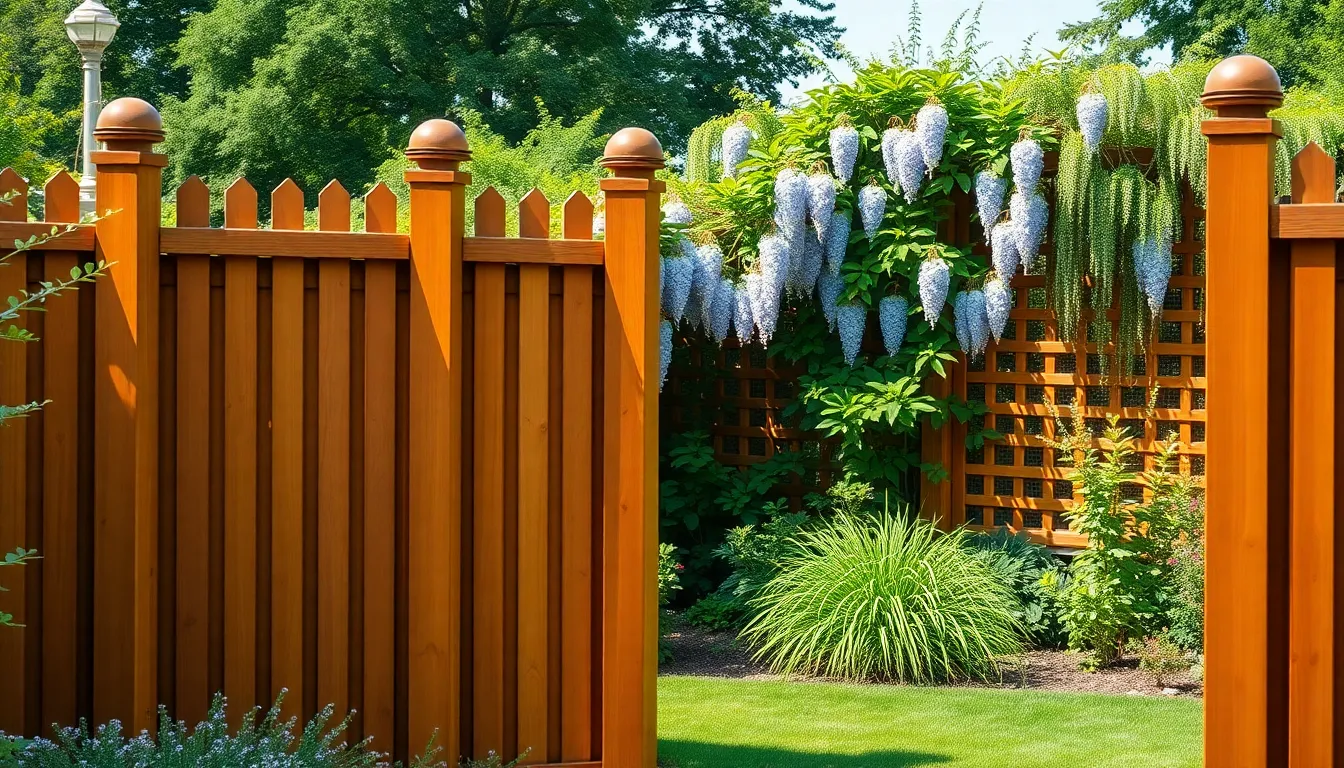
Structural elements transform gardens into private sanctuaries while adding architectural interest to outdoor spaces. These permanent answers offer immediate privacy benefits and can enhance property value.
Install Traditional Wooden Fencing
Wooden fencing creates classic privacy barriers that blend naturally with garden environments. We recommend selecting cedar or redwood materials for their natural resistance to moisture and insects. Vertical board designs provide maximum privacy while horizontal slat patterns offer a more contemporary aesthetic.
Consider fence heights between 6 to 8 feet for optimal screening from neighboring properties. We suggest adding decorative post caps or lattice toppers to enhance visual appeal. Staining or painting wooden fences every 2 to 3 years maintains their appearance and extends their lifespan.
Construct Modern Metal Screen Panels
Metal screens deliver contemporary elegance while providing effective privacy answers. We favor powder coated aluminum or steel materials that resist rust and weathering. Perforated designs allow natural light to filter through while maintaining privacy levels.
Custom patterns like geometric shapes or botanical motifs add artistic elements to functional screening. We recommend mounting panels between posts or directly onto existing fence structures. Modern metal screens require minimal maintenance and can last 15 to 20 years with proper installation.
Build Custom Lattice Wall Systems
Lattice walls offer versatile privacy options that accommodate climbing plants for enhanced screening. We suggest using pressure treated lumber or vinyl materials for durability in outdoor conditions. Diamond or square grid patterns provide optimal support for vine growth.
Installing lattice panels between sturdy posts creates stable privacy barriers. We recommend spacing posts 6 to 8 feet apart for proper structural support. Adding climbing plants like wisteria or allium transforms functional lattice into living privacy screens that provide year round coverage.
Design Vertical Garden Privacy Solutions
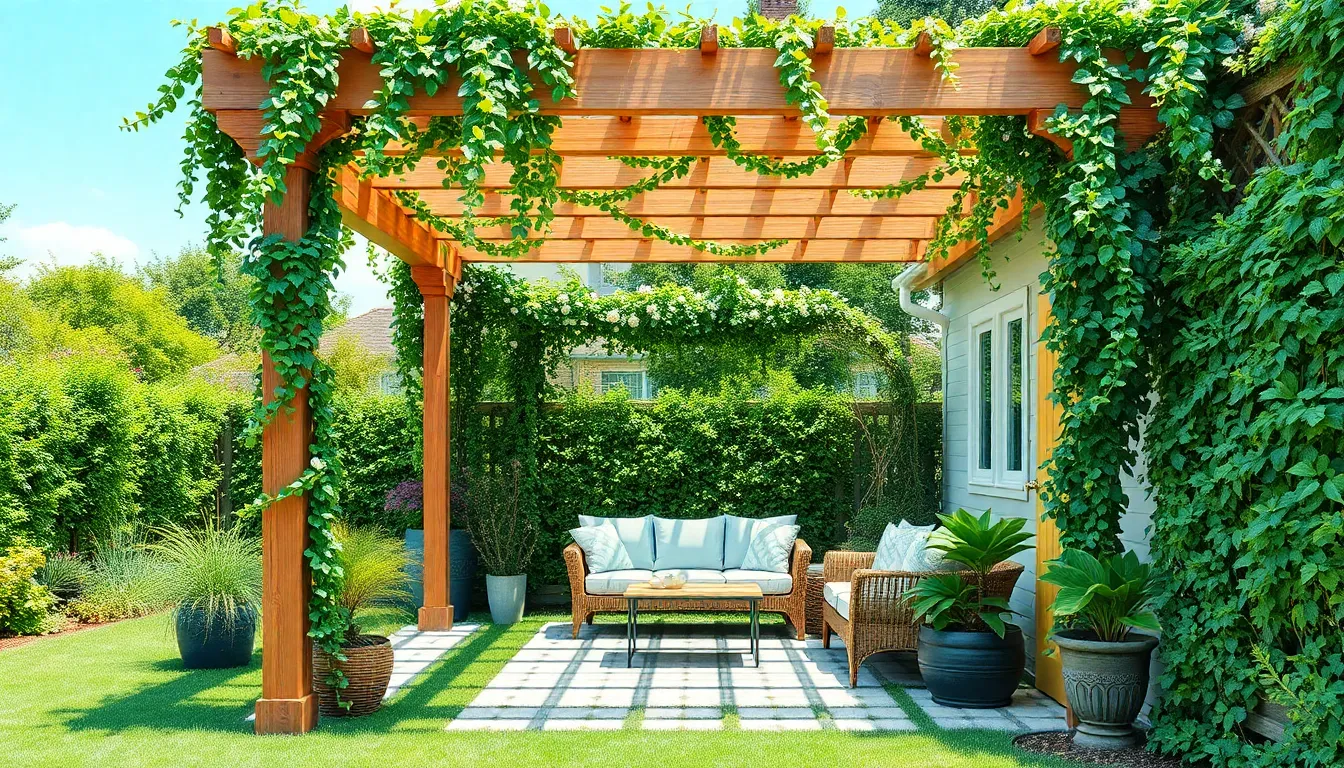
Vertical gardens offer innovative ways to maximize privacy while making the most of limited space. We can transform any garden area into a secluded retreat using upward growing answers that create natural barriers without sacrificing ground space.
Create Living Walls With Climbing Vines
Living walls transform blank vertical surfaces into lush privacy screens that provide year-round coverage. We recommend selecting fast-growing climbing vines like ivy or clematis to establish dense, green barriers that also enhance your garden’s aesthetic appeal. These climbing plants create natural screens that block unwanted views while adding visual interest to otherwise plain walls or fences.
Wall planters installed at various heights allow us to create cascading displays of climbing vegetation. Wisteria and honeysuckle grow quickly to cover large areas, making them excellent choices for homeowners seeking immediate privacy answers. Installing wire mesh or support structures behind wall planters helps guide vine growth in desired directions.
Multiple climbing varieties planted together produce textured, multi-layered privacy screens throughout different seasons. We can combine evergreen vines with flowering varieties to maintain privacy while enjoying seasonal blooms and changing foliage colors.
Install Trellis Systems for Quick Coverage
Trellis panels provide immediate structural support for climbing plants while creating instant privacy barriers. We can position these versatile systems strategically to block exact sight lines or create enclosed garden rooms within larger outdoor spaces. Decorative trellis designs like green leaf garden trellis patterns add stylistic elements while serving functional privacy purposes.
Modular trellis systems allow us to customize coverage areas based on exact privacy needs and garden layouts. Installing multiple panels creates continuous privacy screens that can be adjusted or relocated as plants mature and privacy requirements change. These systems work particularly well along property boundaries where permanent structures might not be permitted.
Pre-planted trellis panels offer immediate privacy while newly planted vines establish root systems and begin climbing. We can select weather-resistant materials like cedar or powder-coated metal that withstand outdoor conditions while supporting vigorous plant growth.
Build Pergolas With Overhead Plant Growth
Pergola structures create private outdoor rooms by supporting overhead vine growth that forms natural canopies. We can construct these architectural elements with sturdy beams designed to bear the weight of mature climbing plants like grapevines or clematis. Training these vines to grow across pergola tops creates shaded, private areas perfect for outdoor dining or relaxation.
Overhead plant coverage provided by pergola-supported vines blocks views from upper-story windows and neighboring properties. Combining pergolas with climbing plants creates multi-level privacy that addresses both horizontal and vertical sight line concerns. These structures also provide partial shade while maintaining air circulation throughout covered areas.
Strategic pergola placement allows us to define exact garden zones while maintaining visual flow between different outdoor spaces. Adding climbing plants with different blooming seasons ensures year-round interest and privacy coverage that evolves throughout the growing season.
Incorporate Natural Stone and Hardscape Elements
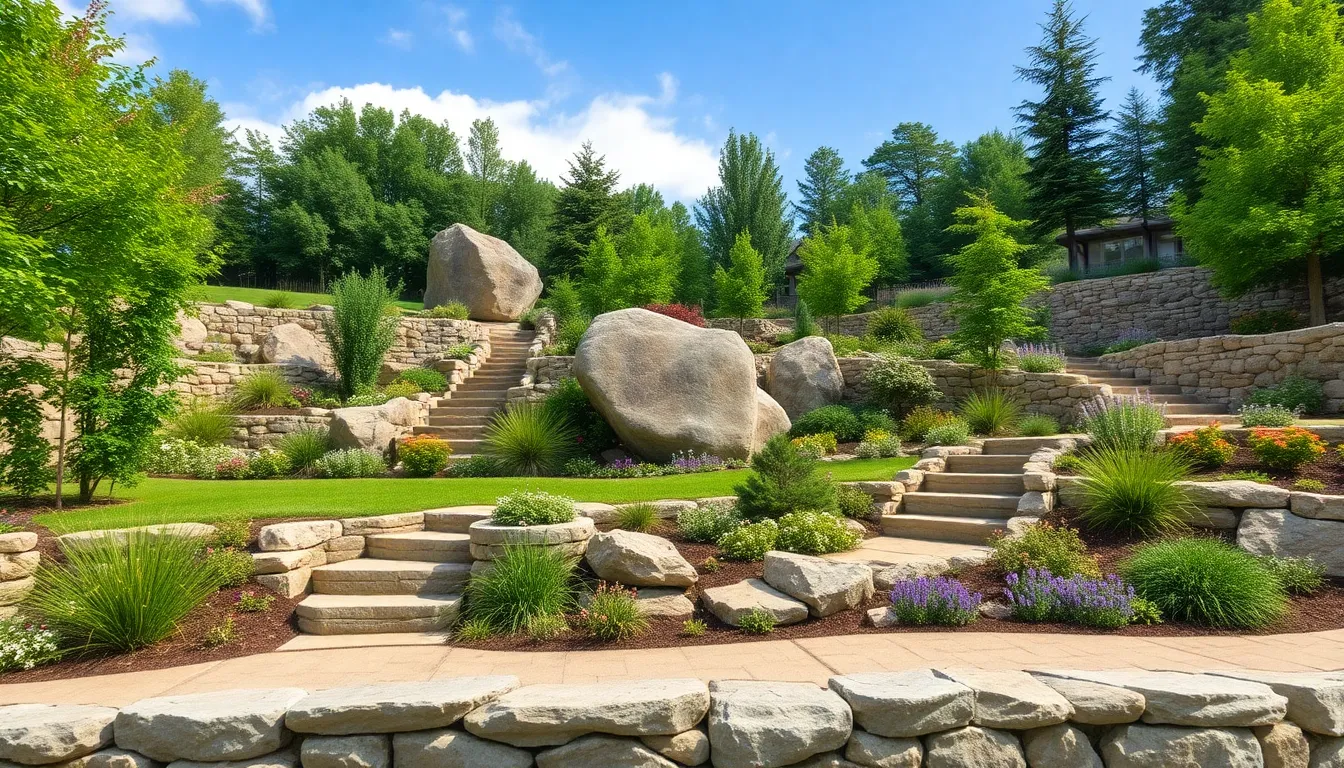
Natural stone transforms any garden into a sophisticated private retreat while providing durable answers that complement your existing industry design. These hardscape elements offer immediate privacy benefits without the wait time required for plants to mature.
Build Privacy Walls With Natural Stone
Natural stone walls create effective barriers that block unwanted views from neighboring properties while adding timeless elegance to your outdoor space. We recommend using fieldstone or limestone for traditional aesthetics, or sleek granite for contemporary garden designs.
Strategic placement of these walls allows you to screen exact sight lines without completely enclosing your garden. Integrating the walls with plantings creates a softer appearance that blends naturally with your industry. Retaining walls serve dual purposes on sloped properties, providing both structural support for terraced levels and effective privacy screening from lower neighboring yards.
Height considerations matter when building privacy walls, with 6 to 8 feet typically providing optimal screening for most residential situations. Building codes in your area may require permits for walls exceeding certain heights, so we suggest checking local regulations before construction begins.
Create Terraced Garden Levels
Terracing transforms sloped gardens into multi level retreats that naturally separate different areas while improving privacy from various vantage points. Each terrace level can serve distinct functions, such as dining areas, reading nooks, or entertainment spaces.
Stone retaining walls between levels create natural privacy barriers that block views from neighboring properties at different elevations. Layered plantings on each terrace add visual depth while creating effective screening that changes throughout the seasons.
Design flexibility allows you to customize each level’s privacy features based on exact needs and sight line concerns. Upper terraces often provide excellent screening from second story windows in neighboring homes, while lower levels create intimate spaces hidden from street view.
Construction typically involves excavating the slope and installing proper drainage behind stone retaining walls to prevent water damage and ensure long term stability.
Install Decorative Boulder Arrangements
Boulder arrangements provide natural focal points that redirect attention away from unwanted views while creating stunning industry features. We position large boulders strategically to block exact sight lines or create visual barriers between different garden areas.
Combining boulders with strategic plantings amplifies the privacy benefits while adding aesthetic appeal throughout the growing season. Native grasses and perennials planted around boulder groupings create naturalistic screens that require minimal maintenance once established.
Size variation in boulder arrangements creates more ever-changing visual interest than uniform installations. Grouping three to five boulders of different sizes typically produces the most pleasing aesthetic results while providing effective screening coverage.
Placement considerations include ensuring proper drainage around boulder installations and selecting positions that complement your garden’s existing circulation patterns. Professional installation may be necessary for larger boulders that require heavy equipment for proper positioning.
Utilize Temporary and Portable Privacy Options
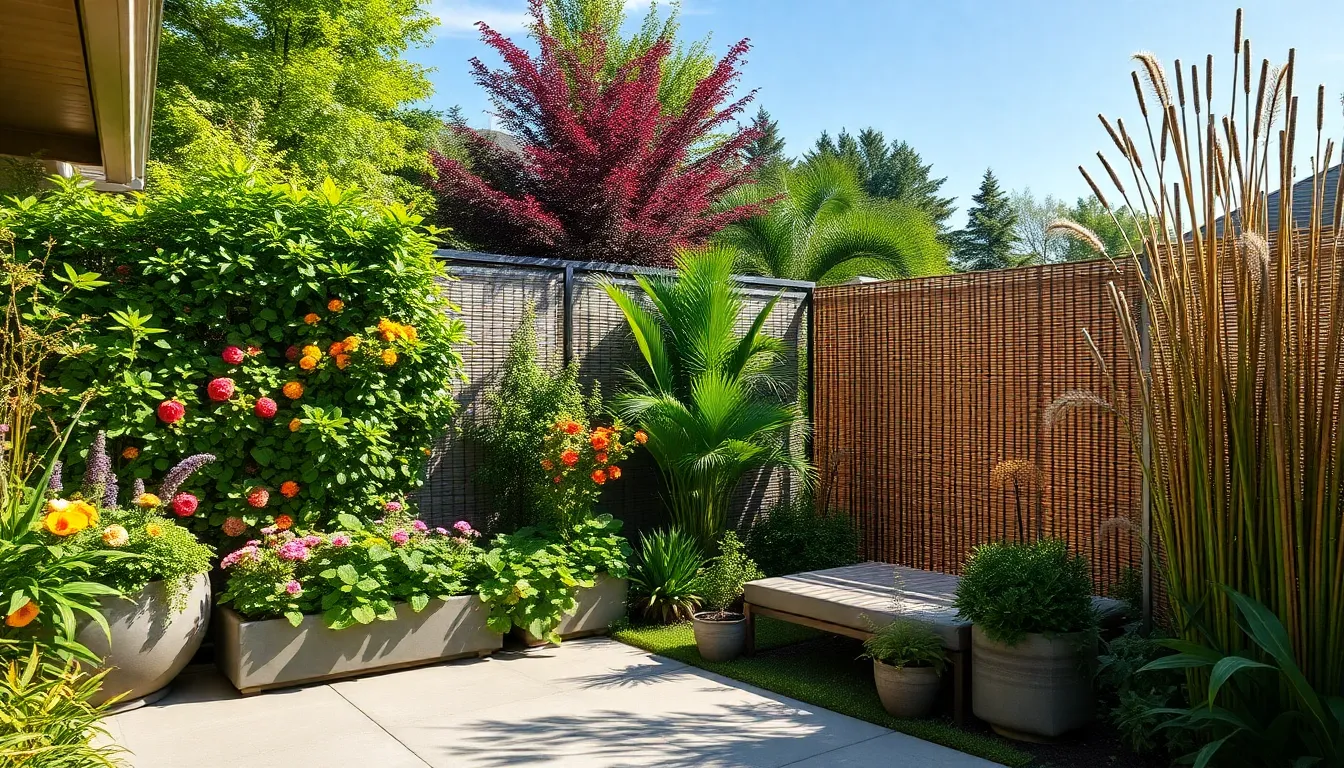
When we need flexible privacy answers that can adapt to changing needs and seasons, temporary and portable options offer the perfect balance of functionality and versatility.
Set Up Moveable Planter Screens
Moveable planter screens provide instant privacy while adding aesthetic appeal to our garden spaces. We can use large planters filled with lush plants or colorful flowers to create effective barriers that block unwanted views from exact areas. These portable answers allow us to rearrange our privacy setup as needed throughout different seasons or occasions.
Dense foliage plants like bamboo, ornamental grasses, or flowering shrubs work exceptionally well in these moveable containers. We can position multiple planters in strategic locations to create natural sight line barriers without permanent installation. Rolling casters added to planter bases make repositioning effortless when we want to open up space for entertaining or seasonal garden activities.
Install Retractable Privacy Panels
Retractable privacy panels offer on demand screening that extends when we need privacy and retracts when we want an open garden view. These versatile systems can be made from various materials like canvas, fabric, or weather resistant synthetic materials that withstand outdoor conditions. Installation typically involves mounting hardware on existing structures like pergolas, fences, or posts.
Canvas panels provide excellent coverage while maintaining durability against wind and weather elements. We can choose from neutral colors that blend with our garden design or bold patterns that add visual interest to outdoor spaces. The retractable mechanism allows us to control privacy levels throughout the day, extending panels during peak neighbor activity hours and retracting them for morning sun or evening breezes.
Create Seasonal Bamboo Barriers
Seasonal bamboo barriers offer sustainable and natural screening options that can be easily installed and removed as needed. Bamboo stalks or pre made bamboo panels provide effective privacy without requiring permanent structural changes to our garden layout. These barriers work particularly well for temporary privacy during outdoor gatherings or seasonal garden activities.
We can secure bamboo panels using removable posts or stakes that won’t damage existing landscaping. Natural bamboo screening creates an organic look that complements most garden styles while providing dense coverage that blocks views effectively. The lightweight nature of bamboo makes these barriers easy to move, store, and reinstall in different locations throughout our garden space.
Combine Water Features With Privacy Elements
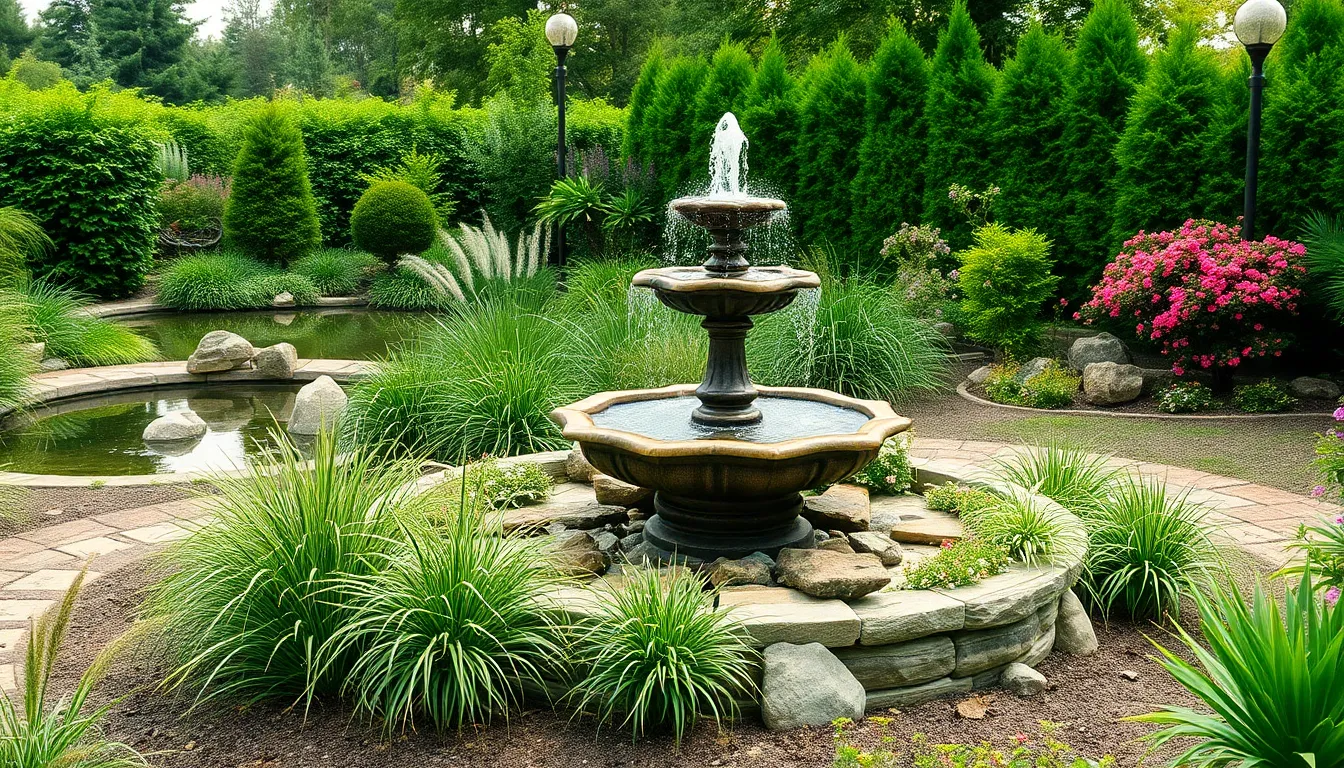
Moving beyond traditional barriers, we can enhance our garden privacy by incorporating water features that serve dual purposes as both aesthetic elements and functional screening answers.
Install Privacy Fountains as Sound Barriers
Privacy fountains create effective sound barriers that reduce outside noise while masking conversations within our garden spaces. We position these fountains strategically between our seating areas and neighboring properties to maximize their acoustic benefits. The continuous sound of flowing water naturally drowns out unwanted sounds from traffic, lawn equipment, or nearby conversations.
Tiered fountain designs work particularly well for privacy applications since they generate more sound than single-level features. We select fountains with adjustable flow rates to control noise levels throughout different times of day. Wall-mounted fountains attached to existing fences or structures provide privacy benefits without requiring additional ground space in smaller gardens.
Create Pond Areas With Surrounding Screens
Pond installations with natural screening elements transform ordinary water features into secluded retreat spaces. We surround our pond areas with dense plantings like ornamental grasses, rhododendrons, or holly shrubs to create intimate viewing areas. These living screens naturally frame the water feature while blocking sight lines from neighboring properties.
Strategic placement of pond-side seating allows us to enjoy the water feature from within our private sanctuary. We incorporate varying plant heights around the pond perimeter, using taller specimens like laurel or bamboo as backdrop screens and lower plantings for foreground interest. This layered approach creates depth while maintaining complete visual privacy from multiple angles.
Design Waterfall Features Along Fence Lines
Waterfall installations integrated into existing fence structures provide both visual barriers and soothing sound elements. We build these features directly against property line fencing, creating an attractive focal point that completely obscures the boundary while adding vertical interest to our garden design.
Cascading water elements along fence lines generate enough ambient sound to ensure conversational privacy while creating a resort-like atmosphere. We design these waterfalls with recirculating pumps and hidden reservoirs to maintain consistent water flow without requiring permanent water connections. Natural stone materials like fieldstone or granite blend seamlessly with our existing hardscape elements while providing the structural support needed for these integrated water features.
Maximize Small Space Privacy With Creative Solutions
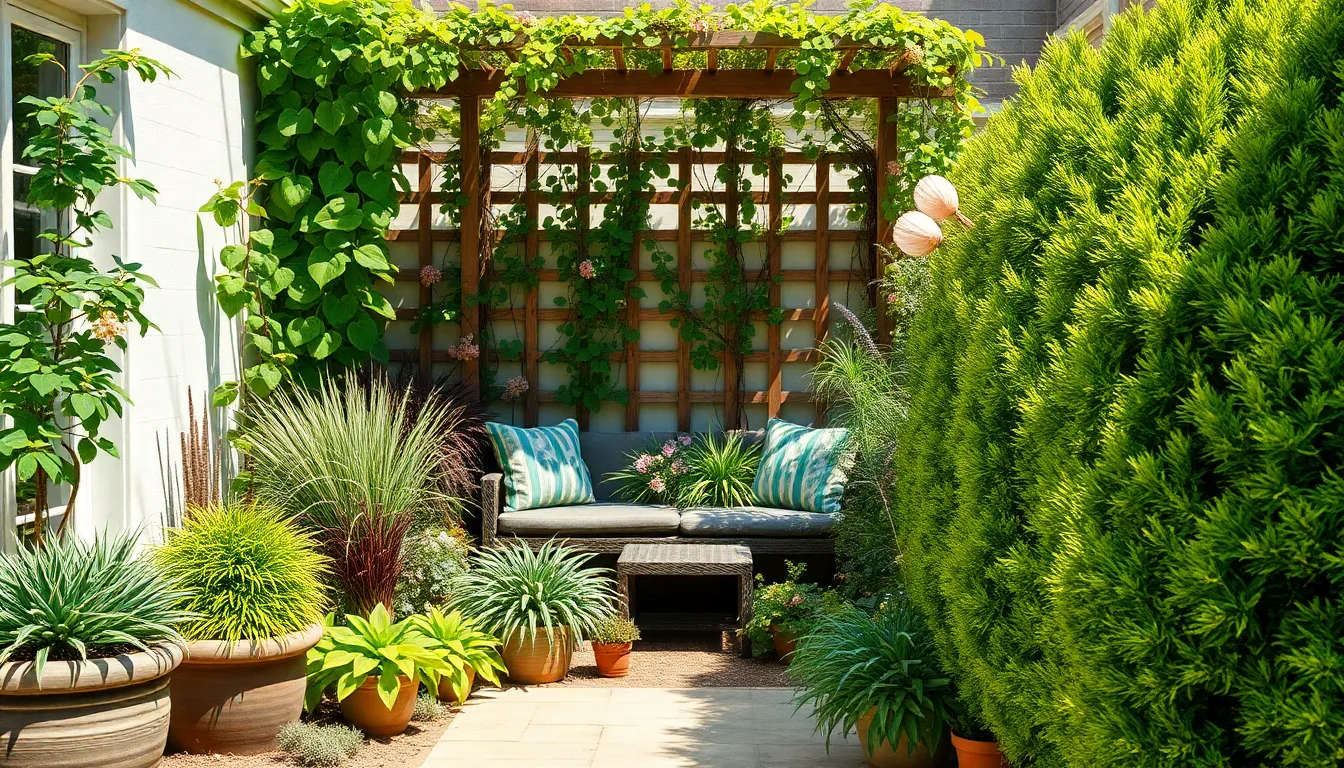
Small gardens demand innovative approaches that make every square foot count for privacy.
Use Multi-Level Container Gardens
Stack planters of varying heights to create layered privacy barriers that block unwanted views while maximizing limited space. We can position tall containers with dense shrubs like laurel or rhododendron at the back, medium height planters with ornamental grasses in the middle, and low containers with spreading plants at the front.
Different sized containers allow us to adjust privacy levels throughout the season by moving planters as needed. Large containers work best for establishing permanent privacy screens, while smaller pots provide flexibility for temporary barriers.
Vertical stacking creates visual depth that makes small spaces appear larger while providing effective screening. We recommend using containers at least 18 inches deep for shrubs and 12 inches for grasses to ensure healthy root development.
Install Corner Privacy Nooks
Design cozy corners using natural elements like plants or trellises to transform unused spaces into intimate retreats. We can use fence corners by installing curved trellis panels that support climbing vines, creating secluded spots perfect for reading or relaxation.
Corner installations require minimal space while delivering maximum privacy impact through strategic placement. Triangular planters fit perfectly into corner angles, allowing us to establish dense screening with holly or boxwood without compromising walkways.
Decorative screens positioned at angles create private zones while maintaining visual interest throughout the garden. We can combine different materials like bamboo panels with climbing plants to achieve both immediate and long term privacy answers.
Create Intimate Seating Areas With Natural Enclosures
Use dense shrubs or trees to enclose seating areas, providing both privacy and natural ambiance in compact spaces. We can plant fast growing varieties like privet or rhododendron in curved arrangements that embrace seating areas without creating claustrophobic enclosures.
Natural enclosures work particularly well when we combine evergreen shrubs with deciduous plants for year round privacy and seasonal interest. Understory plants like hosta and ferns soften the edges while filling gaps at ground level.
Strategic placement of seating within plant enclosures creates the feeling of outdoor rooms that feel separate from the main garden. We can enhance these spaces with fragrant plants like jasmine or honeysuckle that bloom on overhead trellises, adding sensory privacy through scent barriers.
Conclusion
We’ve explored many ways to transform your garden into a private sanctuary without sacrificing style or functionality. From living screens and structural elements to water features and temporary answers there’s an option for every space and budget.
The key is combining different approaches to create layers of privacy that work together. Whether you’re working with a sprawling backyard or a compact urban space these strategies can help you achieve the seclusion you’re seeking.
Remember that the best privacy answers grow and evolve with your garden. Start with one or two elements that fit your immediate needs then build upon them over time to create your perfect outdoor retreat.
Frequently Asked Questions
What are the best fast-growing plants for garden privacy?
Leyland Cypress and Thuja Green Giant are excellent choices for quick privacy screening. These evergreen trees grow rapidly and create dense barriers year-round. For shrub borders, Boxwood and Privet establish privacy quickly while maintaining attractive foliage. These plants can create effective screening within 2-3 growing seasons.
How tall should privacy fencing be for effective screening?
The optimal height for privacy fencing is 6 to 8 feet, which effectively blocks most sight lines while maintaining good proportions in the landscape. Cedar and redwood are recommended materials for their durability and natural aesthetic appeal. This height provides adequate screening without creating an imposing barrier.
What are the best temporary privacy solutions for gardens?
Moveable planter screens filled with bamboo or ornamental grasses offer instant, flexible privacy that can be rearranged as needed. Retractable privacy panels mounted on existing structures provide on-demand screening, while seasonal bamboo barriers offer sustainable temporary options that won’t damage existing landscaping.
How can I create privacy in a small garden space?
Multi-level container gardens with varying heights create layered privacy barriers in limited spaces. Design cozy corner nooks using trellises with climbing plants, and create intimate seating areas enclosed by dense shrubs. Vertical growing solutions like living walls maximize privacy without taking up ground space.
Do water features help enhance garden privacy?
Yes, water features serve dual purposes for privacy. Privacy fountains act as sound barriers, masking outside noise while creating tranquil atmospheres. Tiered fountain designs work well in smaller spaces, while waterfall features integrated along fence lines provide both visual barriers and soothing sounds.
What hardscape elements work best for privacy screening?
Natural stone walls using fieldstone or granite create elegant barriers that block unwanted views while adding sophistication. Terraced garden levels with stone retaining walls separate areas effectively, while decorative boulder arrangements redirect attention from unwanted views and enhance visual appeal.
How can I combine plants and structures for better privacy?
Custom lattice wall systems support climbing plants to create living privacy screens that offer both immediate structure and long-term plant coverage. Pergolas with overhead plant growth address both horizontal and vertical sight lines, while trellis systems allow for customizable privacy solutions that adapt as plants mature.


